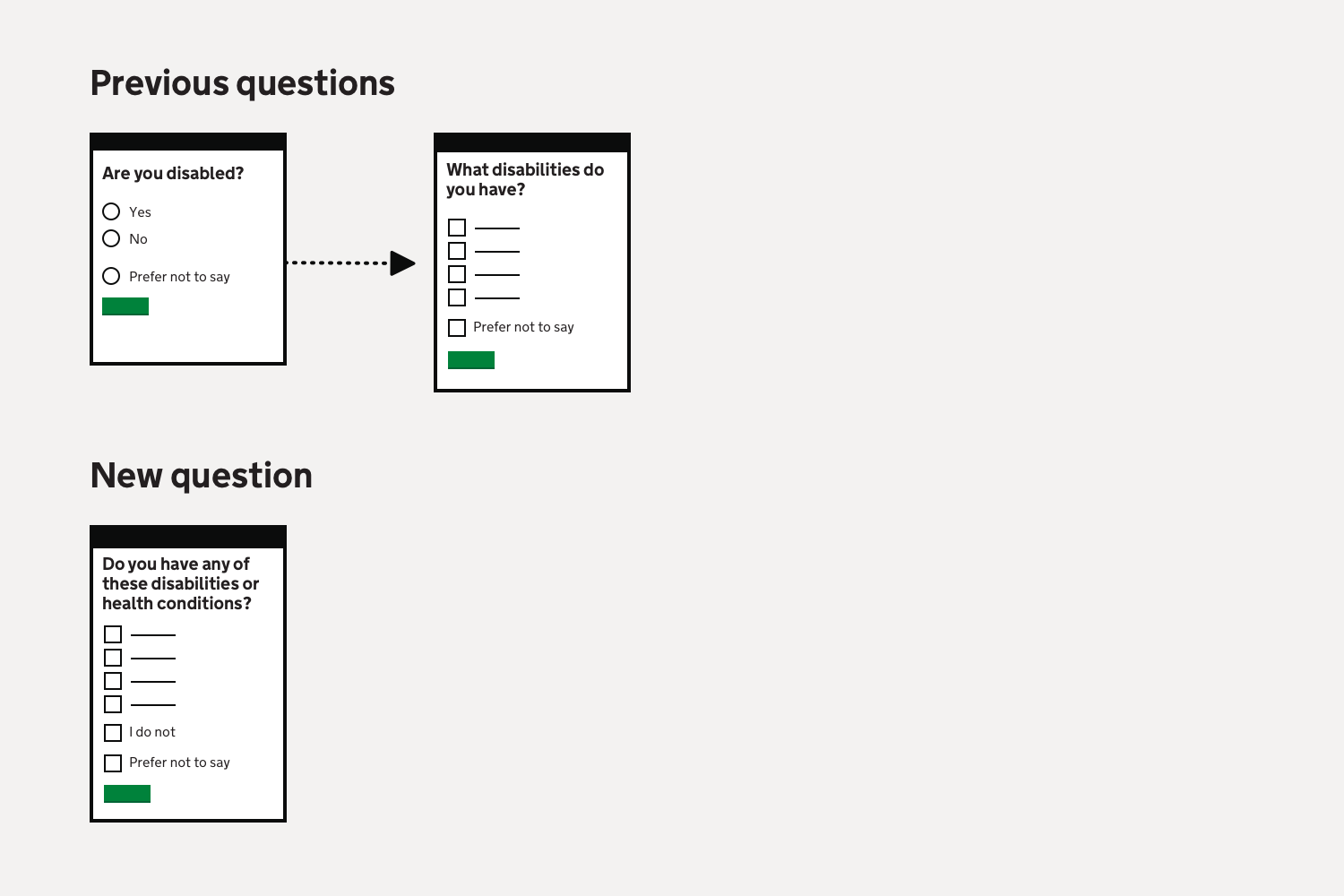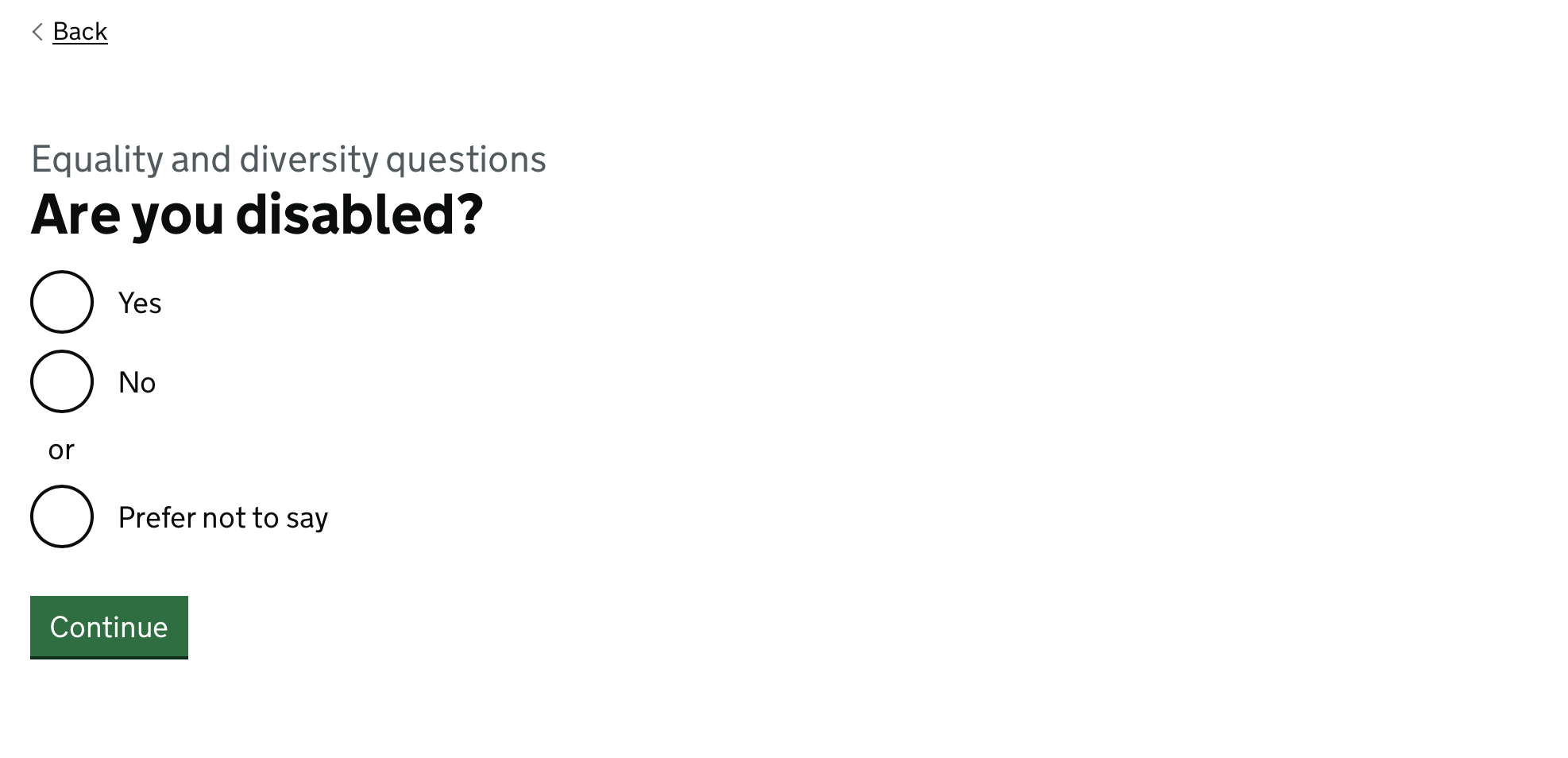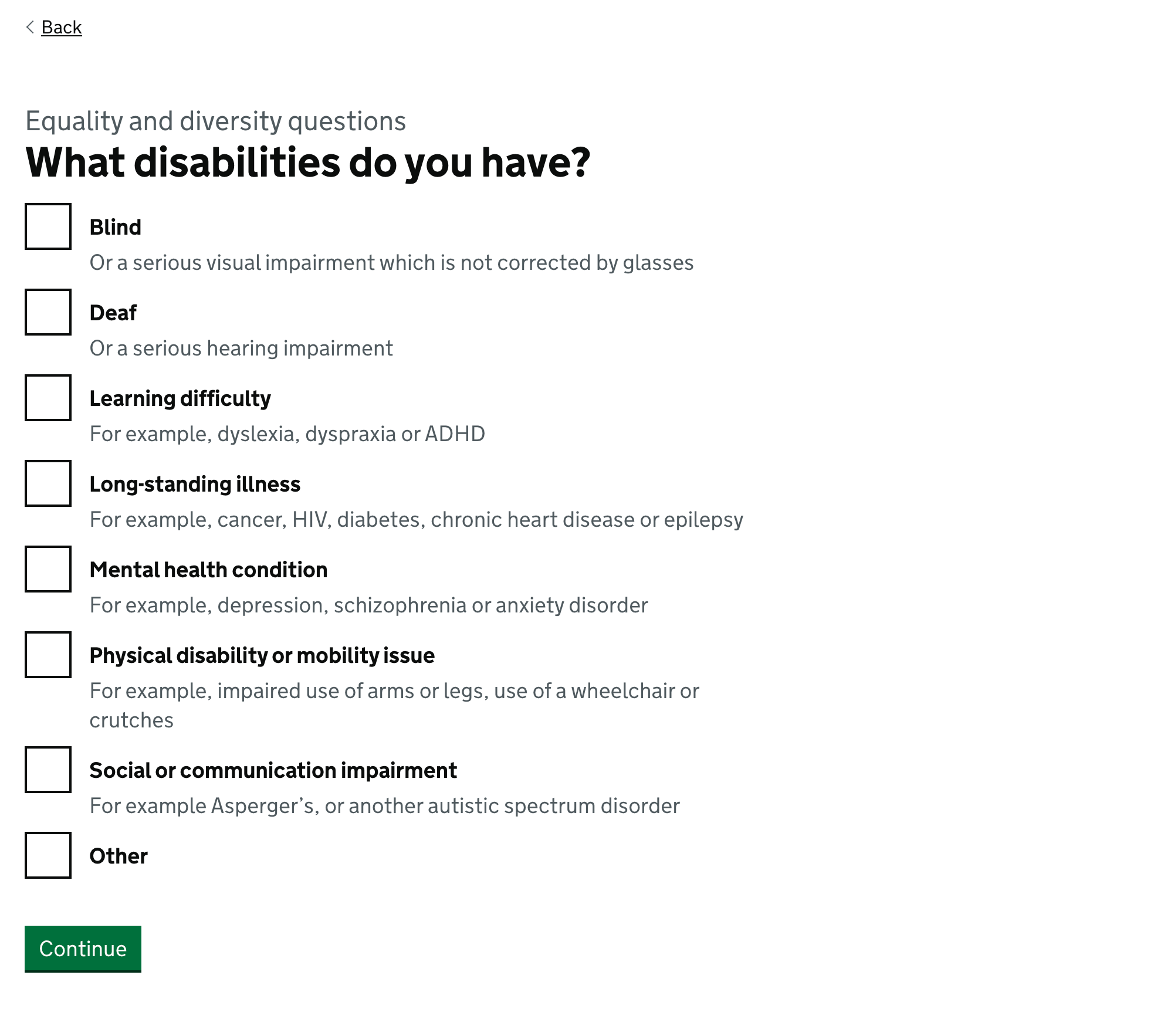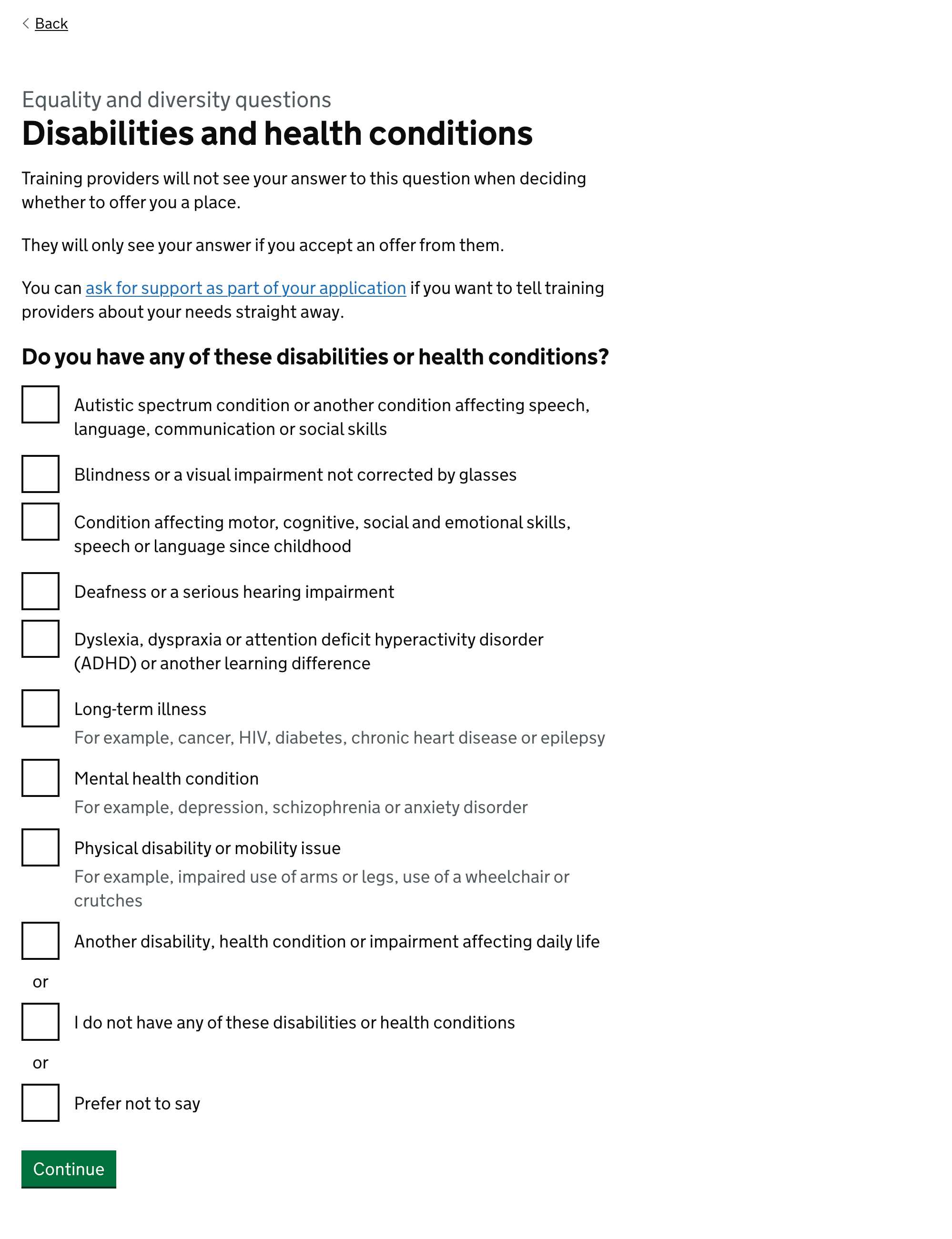
We’ve changed the way we ask candidates about disabilities and health conditions in the equality and diversity monitoring questions shown just before submitting an application.
These changes have resulted in 3 times more people selecting a disability or health condition.
The issue
Previously, we asked the question ‘Are you disabled?’ with the options ‘Yes’, ‘No’ and ‘Prefer not to say’.

If a candidate selected Yes, then we presented a list of checkboxes, with the question ‘What disabilities do you have?’

The advantage of asking the question ‘Are you disabled?’ on the first page is that it allowed the candidates to avoid having to read the list of checkboxes on the second page.
However this caused an issue because candidates who would have chosen some of the checkboxes may not consider themselves as disabled. This meant they would select ‘No’ on the first page which would then skip the second page. We had some evidence of this from user research sessions, where one user who was dyslexic commented that not everyone considers this a disability.
In addition, for the 2022 to 2023 recruitment cycle, the Higher Education Statistics Authority updated their recommended list of options, with some wording changes and 1 new option.
What we changed

We removed the first question, and instead present all users with a list of checkboxes.
We changed the question to ‘Do you have any of these disabilities or health conditions?’ and added a ‘I do not have any of these disabilities or health conditions’ option.
We added some content at the top of the page to confirm that a candidate’s answer is not shown to providers when they are deciding whether or not to offer a place on a course, and instead is only revealed if an offer has been accepted.
We also added a link back to the section of the application where candidates can ask for support if they are disabled as it is important that users do not expect providers to consider their answer to this question at the interview or assessment stage.
We reviewed the content for each of the options, with the aim to front-load the most recognisable words and phrases, and to avoid using hint text except to give examples.
Alternatives we considered
The Higher Education Statistics Agency has some guidance on collecting type of disability for initial teacher training which includes suggested question wording from Advance HE. Their suggestion is to include a lengthy explanation of disability as defined in the Equality Act 2010, and then to ask this question:
Considering the above, do you have an impairment, health condition or learning difference that has substantial and long-term impact on your ability to carry out normal day-to-day activities?
We considered that this was too much of a cognitive burden on candidates, particularly at the application stage of the process.
The equality information pattern in the GOV.UK Design System asks an initial question of ‘Do you have any physical or mental health conditions or illness lasting or expected to last 12 months or more?’ and then a follow-up question of ‘Do any of your conditions or illnesses reduce your ability to carry out day to day activities?’. This pattern does not include a list of disability or health conditions.
Initial results
Comparing the first 28 days of the 2022 to 2023 recruitment cycle (around 8,000 applications) to the first 28 days of the previous cycle, 15% of candidates have selected one or more disability or health condition compared to 4% in the last recruitment cycle.
The 3 most frequently selected options account for the majority of the change:
- 6% of candidates have selected “Dyslexia, dyspraxia or attention deficit hyperactivity disorder (ADHD) or another learning difference” compared to 2% selected “Learning difficulty” last cycle
- 5% of candidates selected “Mental health condition”, compared to 1% of candidates selecting the same option last cycle
- 2% of candidates selected “Long-term illness”, compared to less than 0.5% of candidates selected “Long-standing illness” last cycle
Further considerations
We plan to continue including these questions within usability research sessions, so that we can see whether there are any further changes we could make.
We will review the work of other government departments, including the Disability Unit, the Government Analysis Function impairment harmonised standard and the GOV.UK Design System patterns as they develop.